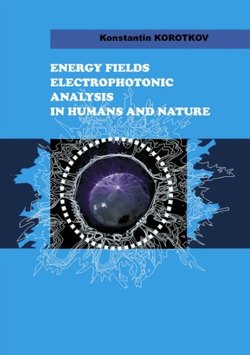Читать книгу Energy Fields Electrophotonic Analysis In Humans and Nature - Konstantin M.D. Korotkov - Страница 25
На сайте Литреса книга снята с продажи.
What is energy?
ОглавлениеEnergy (from the Greek enérgeia – action, activity), is a general quantitative measure of any type of movement, activity and the interaction of all types of matter. Energy in nature does not come from nothing and does not disappear; it can only be transferred from one form to another. The concept of energy binds together all natural phenomena.
Just as there are different forms of the movement of matter, there are different forms of energy: kinetic and potential, mechanic, electromagnetic, nuclear and so on. These divisions are generally well-known. So chemical energy is made up of the kinetic energy of the movement of electrons and the electrical energy of the interaction of electrons amongst themselves and with atomic nuclei. Internal energy is equal to the sum of the kinetic energy of molecular movement around the center of body mass and the potential energies of the interaction of molecules amongst themselves.
The theory of relativity shows that the energy Е of the body is inextricably linked to its mass m as in the equation E = mc2, where c is the velocity of light in a vacuum. This means that in any amount of mass we have huge energy potential. The best prove is an atomic or nuclear bomb where from little mass we directly extract energy.
Any body possesses energy, and this energy can change from one type to another. Human body has tremendous resource of energy, which may be used for physical, emotional or mental activity. We accept this energy from food, water and light. These are the main resources of life.
According to classical physics, the energy of any system is constantly changing and can assume any value. According to the quantum theory, the energy of micro particles, whose movement occurs in a limited area in space (for example, electrons in atoms), adopts a discrete series of values. Atoms radiate electromagnetic energy in the form of discrete portions – light quanta, or photons.
From a biophysical standpoint, the energy of systems and organs is determined by the level of mitochondria ensured by free electrons, i.e. by the character of electron transport. The capacity of mitochondria to produce ATP determines the possibility of accomplishing the work for the processes of physiological activity. But the possibility of accomplishing work is also called energy.
The EPI method measures electron densities in human systems and organs, as well as the character of the stimulated electron currents. These electron densities are the fundamental basis of the physiological energy, so we can say with confidence that the EPI method makes it possible to measure the body’s potential energy reserve.
